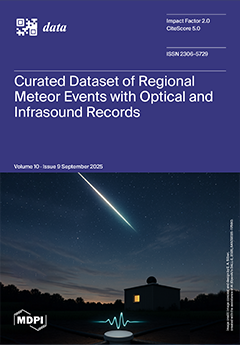Reliable, high-resolution emission inventories are essential for accurately simulating air quality and for designing evidence-based mitigation policies. Yet their performance over Japan—where transboundary inflow, strict fuel regulations, and complex source mixes coexist—remains poorly quantified. This study therefore benchmarks four widely used anthropogenic inventories—REAS
[...] Read more.
Reliable, high-resolution emission inventories are essential for accurately simulating air quality and for designing evidence-based mitigation policies. Yet their performance over Japan—where transboundary inflow, strict fuel regulations, and complex source mixes coexist—remains poorly quantified. This study therefore benchmarks four widely used anthropogenic inventories—REAS v3.2.1, CAMS-GLOB-ANT v6.2, ECLIPSE v6b, and HTAP v3—by coupling each to WRF-Chem (10 km grid) and comparing simulated surface PM
2.
5, SO
2, CO, and NO
x with observations from >900 stations across eight Japanese regions for the years 2010 and 2015. All simulations shared identical meteorology, chemistry, and natural-source inputs (MEGAN 2.1 biogenic VOCs; FINN v1.5 biomass burning) so that differences in model output isolate the influence of anthropogenic emissions. HTAP delivered the most balanced SO
2 and CO fields (regional mean biases mostly within ±25%), whereas ECLIPSE reproduced NO
x spatial gradients best, albeit with a negative overall bias. REAS captured industrial SO
2 reliably but over-estimated PM
2.
5 and NO
x in western conurbations while under-estimating them in rural prefectures. CAMS-GLOB-ANT showed systematic biases—under-estimating PM
2.
5 and CO yet markedly over-estimating SO
2—highlighting the need for Japan-specific sulfur-fuel adjustments. For several pollutant–region combinations, absolute errors exceeded 100%, confirming that emissions uncertainty, not model physics, dominates regional air quality error even under identical dynamical and chemical settings. These findings underscore the importance of inventory-specific and pollutant-specific selection—or better, multi-inventory ensemble approaches—when assessing Japanese air quality and formulating policy. Routine assimilation of ground and satellite data, together with inverse modeling, is recommended to narrow residual biases and improve future inventories.
Full article





